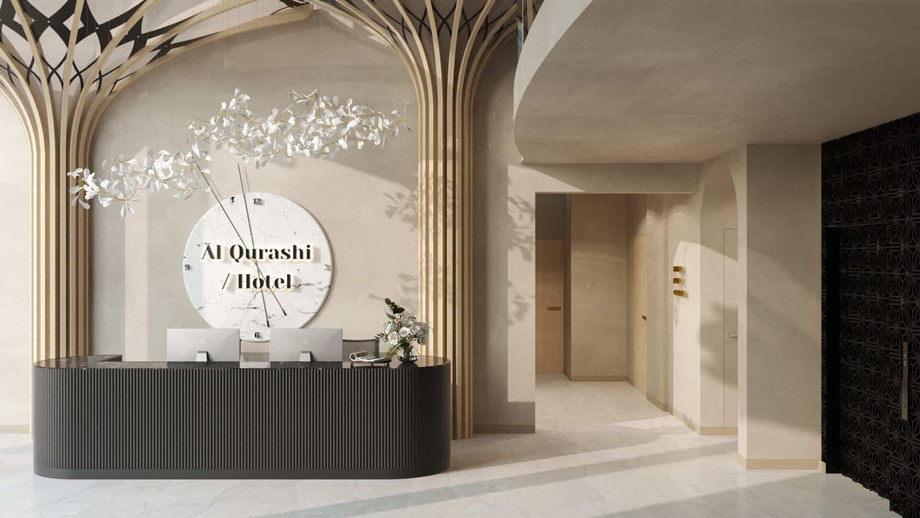Luxury hotels are more than just places to stay; they are immersive experiences that combine opulence, comfort, and exceptional design to create an atmosphere of indulgence and relaxation. Luxury hotel design is a meticulous craft that combines aesthetics, functionality, and innovation. In this article, we will delve into the world of luxury hotel design, exploring the significance of design in the hospitality industry, the key elements that define luxury hotel design, and some iconic examples of these exceptional establishments.
The Significance of Luxury Hotel Design
Luxury hotel design goes beyond mere aesthetics. It plays a pivotal role in defining the guest experience and the success of the hotel itself. Here are some of the key reasons why design is of utmost importance in the hospitality industry:
Guest Experience: Luxury hotel design is a tool for crafting memorable experiences. It sets the stage for a stay that is not only comfortable but also extraordinary. The design elevates the guest's stay from ordinary to exceptional.
Branding: A hotel's design is a visual representation of its brand identity. It communicates the values, personality, and level of service offered by the hotel. A well-designed hotel reinforces its brand image.
Differentiation: In a competitive market, luxury hotel design serves as a differentiator. It distinguishes a hotel from its competitors, attracting guests seeking a unique and opulent experience.
Revenue Generation: Luxury hotels often command higher room rates, and a significant part of this premium can be attributed to the design and the perceived value it offers to guests.
Sustainability: Many luxury hotels prioritize sustainable design, incorporating eco-friendly materials and practices. This not only aligns with modern values but also reduces operational costs in the long run.
Key Elements of Luxury Hotel Design
Architectural Excellence: Luxury hotel design often starts with architectural brilliance. The building's structure, layout, and aesthetics must be remarkable and capable of leaving a lasting impression.
Interior Elegance: The interior design of luxury hotels is characterized by elegance, sophistication, and a harmonious color palette. High-quality materials, fine craftsmanship, and attention to detail are essential.
Comfort and Amenities: Luxury hotels prioritize guest comfort and offer a wide range of amenities. Plush bedding, spacious bathrooms, and cutting-edge technology are standard inclusions.
Art and Decor: Many luxury hotels feature an extensive collection of art and decor that enhances the overall ambiance. This can include fine art, sculptures, and bespoke furnishings.
Innovative Lighting: Lighting design is crucial. It can create different moods, highlight architectural features, and accentuate artwork.
Views and Location: The hotel's location and the way it makes use of surrounding natural beauty can be a key element of luxury design. Rooms with breathtaking views are often sought after.
Personalization: Luxury hotels go the extra mile to offer personalized experiences. This includes customized services, room configurations, and even private concierge services.
Iconic Examples of Luxury Hotel Design
Burj Al Arab, Dubai: Known as one of the world's most luxurious hotels, the Burj Al Arab is an architectural marvel. Its opulent design includes a soaring atrium, lavish suites, and spectacular views of the Arabian Gulf.
The Ritz Paris, France: With its classic French elegance, The Ritz Paris is an icon of luxury hospitality. Its design showcases exquisite materials, antique furnishings, and lavish decor that reflect the city's cultural heritage.
Aman Tokyo, Japan: Aman Tokyo embodies contemporary Japanese design, fusing minimalism with traditional aesthetics. It features sleek interiors, a serene atmosphere, and panoramic city views.
The Plaza Hotel, New York: A historic gem, The Plaza Hotel combines classic luxury with modern comforts. Its design features marble floors, gilded moldings, and sumptuous furnishings, evoking a timeless elegance.
Mandarin Oriental Bangkok, Thailand: This hotel marries traditional Thai aesthetics with modern luxury. The design incorporates rich teakwood, silk fabrics, and intricate Thai motifs.
The Adare Manor, Ireland: The Adare Manor is a neo-Gothic masterpiece set amidst enchanting gardens. Its opulent design includes ornate ceilings, hand-painted wallpapers, and a stunning golf course.
The St. Regis Bora Bora Resort, French Polynesia: Nestled in a tropical paradise, this resort is a sanctuary of luxury. Its overwater bungalows, infinity pools, and Polynesian-inspired design provide an idyllic setting.
Sustainability in Luxury Hotel Design
Sustainability has become a crucial element in luxury hotel design. Many luxury hotels are integrating eco-friendly practices into their design and operations. Sustainable design elements include:
Energy Efficiency: Incorporating energy-efficient systems, such as LED lighting and smart climate control, to reduce energy consumption.
Water Conservation: Using water-saving fixtures and systems to minimize water waste.
Local Materials: Sourcing materials locally to reduce the carbon footprint associated with transportation.
Renewable Energy: Utilizing renewable energy sources, such as solar panels, to power the hotel's operations.
Sustainable Landscaping: Landscaping with native, drought-resistant plants that require minimal irrigation.
Waste Reduction: Implementing waste reduction and recycling programs to minimize the hotel's environmental impact.
For More Info:-
Interior Design For Restaurant






Comments